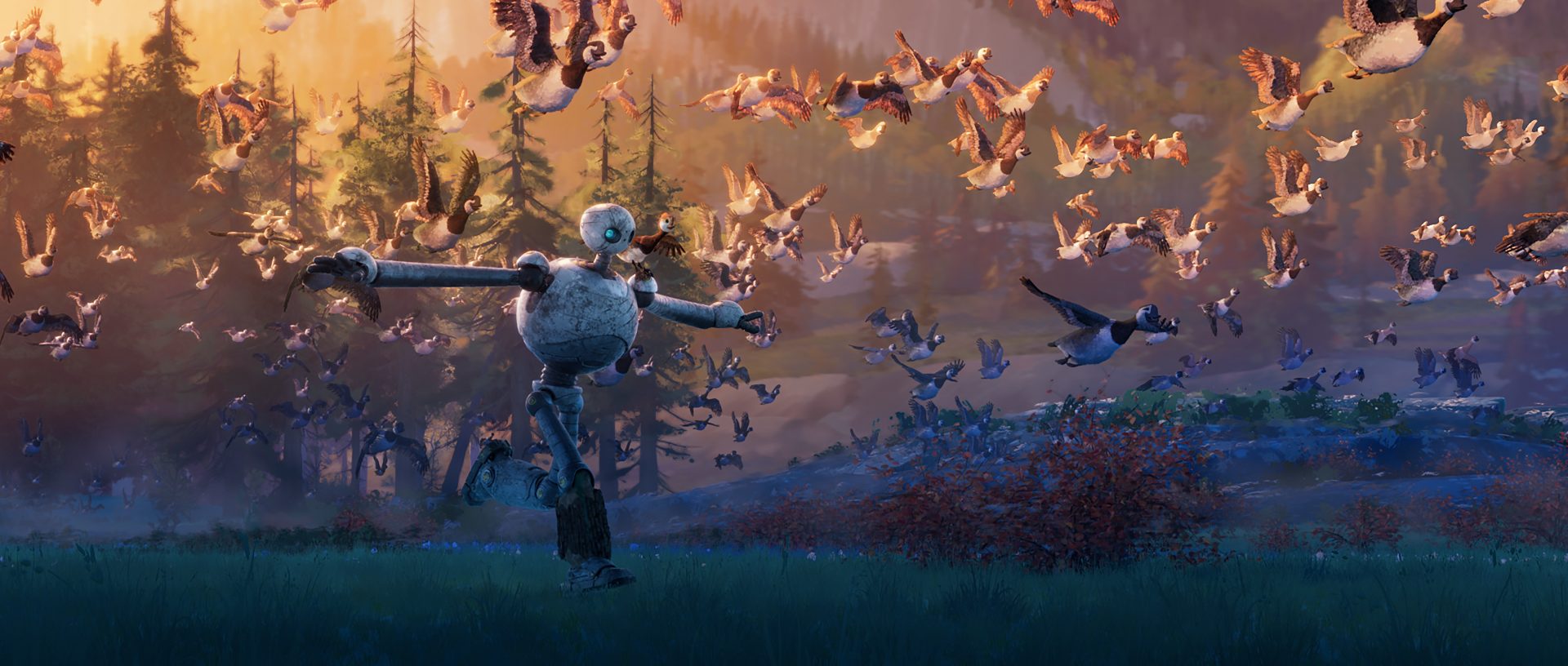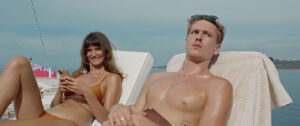Beautiful scenes of island biomes and whales swimming past a half-submerged Golden Gate Bridge are some of the most memorable images of Chris Sander’s animated movie The Wild Robot (2024), based on the book of the same name by Peter Brown. The film portrays the journey of robot Roz (Lupita Nyong’o) when she washes up on the rocky shore of an island full of trees, mountains, lakes, and absolutely no humans.
The movie adaptation maintains the original setting and general storyline of the book, but makes several noticeable changes. The film doesn’t carry the same optimism about a natural human (or in this case, animal) tendency towards kindness. It projects a cynical view of the flaws in human society—cliques, social exclusion, and children as an unwanted burden—onto a human-free environment. Despite being set in a futuristic, highly controlled world, the book is not dystopian; rather, it portrays a feeling of community that the film pushes aside.
Through the sudden introduction of an AI robot into an environment untouched by humans, Brown’s book questions our future and how the natural world will change as technology advances. Like many children’s books, the original story carries a message beyond its intended age group while maintaining a sense of hope. The movie, on the other hand, caters to an older audience. It uses humor commonly found in media for older age groups—perhaps to combat complaints that the story’s worldview is somehow simplistic or childish, despite the fact that optimism, however unrealistic, is a major part of the story. The opossum Pinktail (Catherine O’Hara), for example, belabors the exhaustion of parenting, feelings which are more likely to resonate with the adults in the theater than the children.
When Roz awakens stranded on an island, she immediately senses danger as large, intimidating waves crash against the shore. In the book, she takes her first of many lessons from animals by mimicking a crab’s method of climbing to safety. This hints toward her future integration; she is a robot, but as alive as any of them. She questions why she can’t be one of them, proceeding to learn and reach out to the animals despite their original resistance. In the film, though, her primary motivation is completing her assigned purpose—“A Rozzum always completes its task. Just ask!” Because she already has a sense of self, she does not embark on the same journey of self-discovery until she is left with no choice.
While book Roz becomes an important part of the community and the animals come together to raise her adopted gosling, Brightbill (Boone Storm), their movie counterparts remain outcasts. The film still has the theme of nature interacting with technology, but adds a side plot of emotional turmoil and family strife—not an issue in itself, but it directs focus to conflict whereas the book mainly showed cooperation. The dynamic of the characters Roz, Brightbill, and the fox Fink (Pedro Pascal) is the main focus, while in the book each character gets their own recognition. The film promotes a smaller family simply coexisting with others, rather than a community that actively helps each other thrive. This cynical point of view is more likely to drive us as an audience apart from each other than to give us hope in our communities.
Although the movie is a largely poignant work of art with a powerful message, relinquishing the more optimistic appeal of the book changes its meaning. The movie focuses on how, as technology advances, the existence of autonomous “Rozzum” robots is becoming more and more believable, leaving many to wonder how these robots might alter their behavior. However, that’s not the focus of the story Brown originally intended—his book revolves around found community. Unlike the novel, we don’t see Roz become a beloved part of the animal community until much later, and the animals never come together to raise Brightbill—they’re too focused on their separate lives for that natural, instinctive kindness. This mirrors our own present-day society, not one that we should strive for.
In a story with minimal human involvement, The Wild Robot is undoubtedly human-centric. The message of the book asks us how, as technology develops and this scenario becomes increasingly plausible, we will be able to coexist with nature and resist getting lost in programmed predictability. The changes made in the movie provide a worrying answer: as humans, we tend to put ourselves first. However, this deviation from the original story also begs another question: can we still value nature as it is, or will we only protect other living beings if we are able to see ourselves in them?





